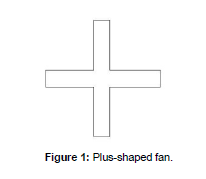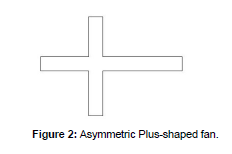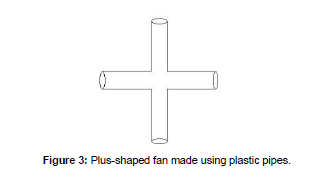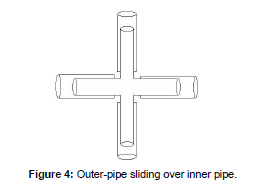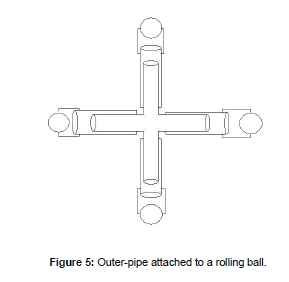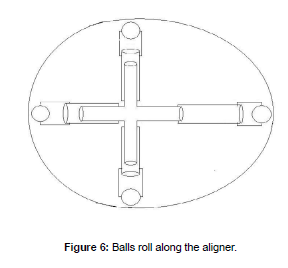A Low Cost Solution to Tap into Gravitational Potential Energy of Earth
Received: 02-Apr-2024 / Manuscript No. ijaiti-24-131380 / Editor assigned: 05-Apr-2024 / PreQC No. ijaiti-24-131380(PQ) / Reviewed: 18-Apr-2024 / QC No. ijaiti-24-131380(QC) / Revised: 25-Apr-2024 / Manuscript No. ijaiti-24-131380(R) / Accepted Date: 30-Apr-2024 / Published Date: 30-Apr-2024 DOI: 10.4172/2277-1891.1000261
Abstract
This paper discusses a low cost solution to tap into gravitational potential energy of earth using a plus shaped plastic fan. It was shown in [1] that gravity can be converted to electricity without using running resource. However, the solution presented in [1] is not a commercially viable solution as cost per watt generated using a piezo transducer is very high. The trick to finding a low cost solution lies in arranging non-rigid bodies in an appropriate asymmetric way so that gravity can create continuous movement.
Introduction
Global warming (climate change) is a serious problem humans are currently facing. Renewable energy is a promising solution which can help bring global warming to permissible levels. Gravitational potential energy of earth is a recently discovered renewable energy source [1]. According to classical mechanics, it is not possible (using rigid bodies) to convert gravity into electricity directly. However, this result is not applicable when we are dealing with systems containing non-rigid bodies. It was shown in [1] that it is possible to convert gravity into electricity (using piezo transducers) without consuming running resource. Generator made up of piezo transducers is not a commercially viable solution as cost per watt generated is very high. The trick for creating a commercially viable solution lies in arranging non-rigid bodies in an appropriate asymmetric way so that gravity can create continuous movement.
Theoretical model
Let us see one such example of appropriate asymmetric arrangement below. Consider a plus-shaped fan as shown in Figure 1. All the blades are of equal length. The torque due to gravity on any one blade is cancelled by torque due to gravity on opposite side blade. Hence, there is no fan rotation due to gravity.
Next, consider a fan which is like a Jesus Christ’s cross held in a horizontal orientation, as shown in Figure 2. Consider a vertical axis passing through the center (junction) of the fan. To the left side of this axis, edge of the fan blade moves in a circular path. To the right side of the vertical axis, edge of the fan blade moves in an elliptical path. Since, length of fan blade is longer on right side of the axis, torque due to gravity is also higher. Hence, the fan will rotate in clockwise direction, due to gravity.
Next, let us look at how such a fan can be constructed.
Practical model
Consider a plus-shaped fan made of plastic pipes as shown in Figure 3. Here, all blade lengths are equal. Next, attach another plastic pipe of slightly larger diameter than the inner pipe as shown in Figure 4. So that it can slide along the length of the inner pipe. Attach a rolling ball to the outer pipe as shown in Figure 5.
Finally, place an aligner as shown in Figure 6.
Aligner and moving outer pipe will ensure that the ball follows a circular path to the left of the vertical axis (2nd and 3rd quadrants). To the right side of the vertical axis, in the 4th quadrant, ball will roll along the aligner in an elliptical path. Such a fan converts Gravitational Energy of earth into rotational kinetic energy and it is called GRAEN generator. Fan may stop rotating after some time due to friction. We can use a battery-motor combination to give some initial momentum. We can use a part of the energy generated to recharge the battery and the cycle can be repeated.
Conclusion
A low cost solution to tap into gravitational potential energy of earth is presented. The methodology used to come up with this idea is inspired from an engineering technique called Gandhian Engineering. Gandhian Engineering proposes the idea of extracting more services using less resources for more and more people. GRAEN generator is an example of Gandhian Engineering. It produces electricity without using running water resource. It is in open-source so that anyone can build it. It does not cause air pollution.
References
Citation: Sumith Kumar BRV (2024) A Low Cost Solution to Tap into Gravitational Potential Energy of Earth. Int J Adv Innovat Thoughts Ideas, 12: 261. DOI: 10.4172/2277-1891.1000261
Copyright: © 2024 Sumith Kumar BRV. This is an open-access article distributed under the terms of the Creative Commons Attribution License, which permits unrestricted use, distribution, and reproduction in any medium, provided the original author and source are credited.
Share This Article
Recommended Journals
Open Access Journals
Article Tools
Article Usage
- Total views: 521
- [From(publication date): 0-2024 - Apr 04, 2025]
- Breakdown by view type
- HTML page views: 354
- PDF downloads: 167

